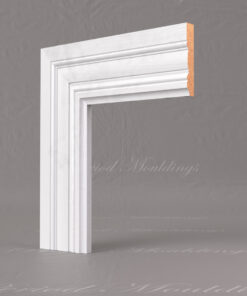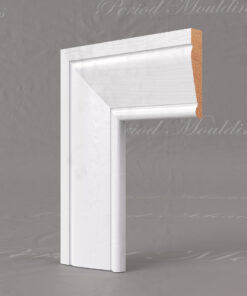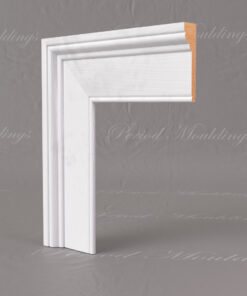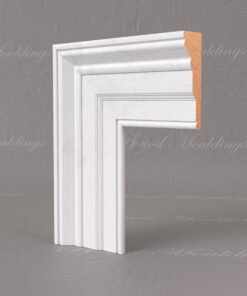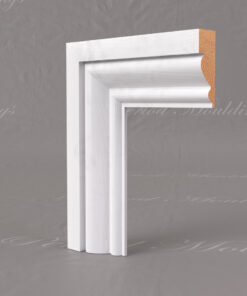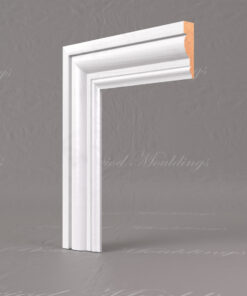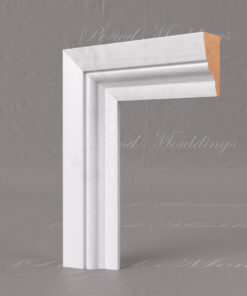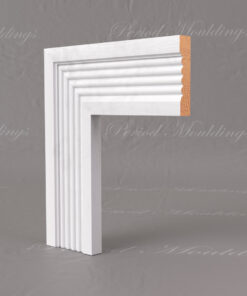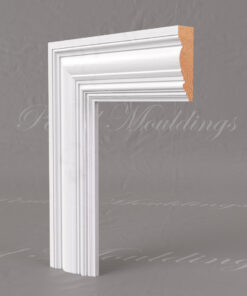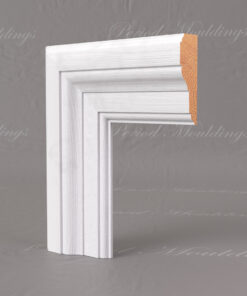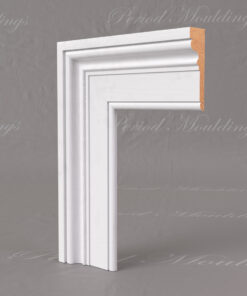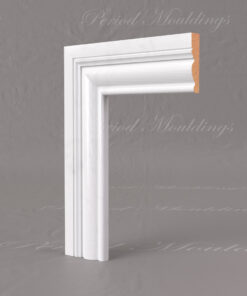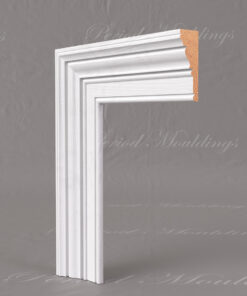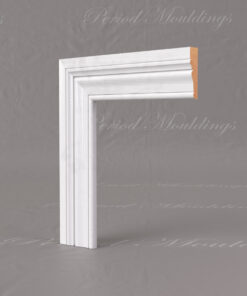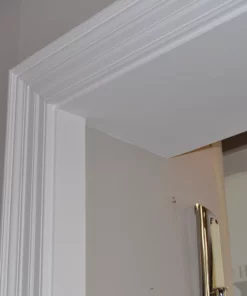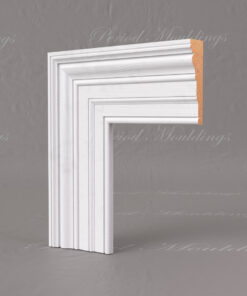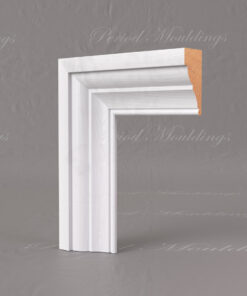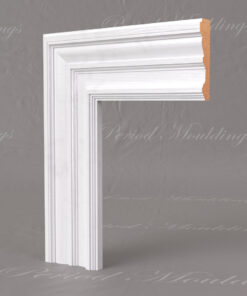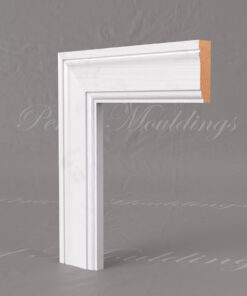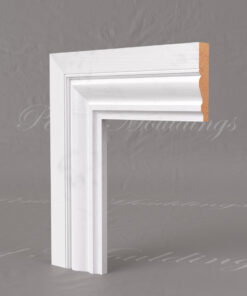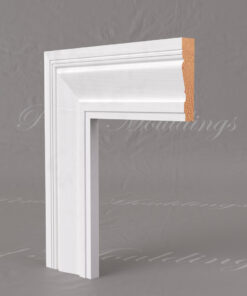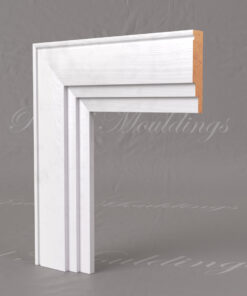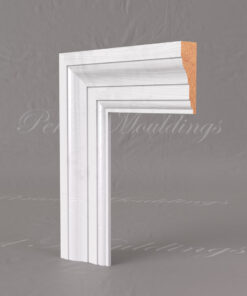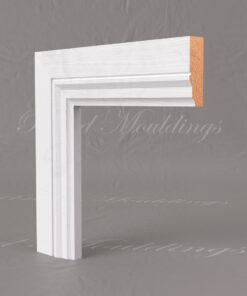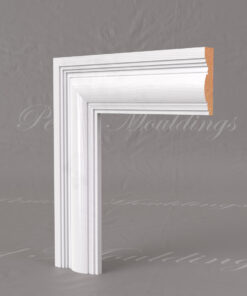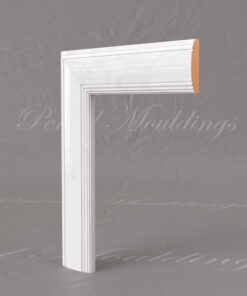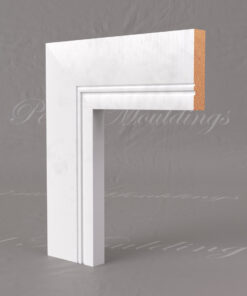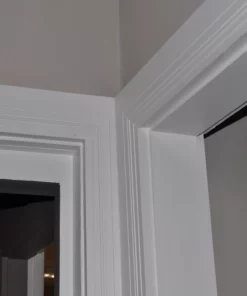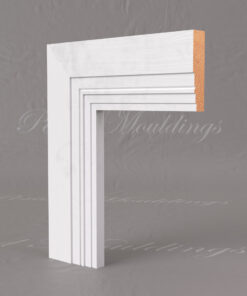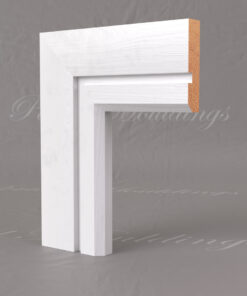Why Interior Design—and Architrave—Matters
At Period Mouldings, we believe your home should reflect comfort, style, and character. After all, we spend so much time in our homes—it’s only natural to want our personal spaces to feel like a sanctuary. Often, it’s during quiet moments—like a TV ad break—when we notice things that need updating. Maybe it’s a fixture that never quite worked or a detail you’ve meant to change for months. When we finally fix it, there’s a great sense of satisfaction.
One feature that’s often overlooked is architrave. It plays both a decorative and practical role in your home. While easy to miss when it’s doing its job, architrave becomes very noticeable if it’s damaged or missing.
That’s why we’ve created this guide—to help you choose the right type of architrave, especially if this is your first time considering it.
What Is Architrave?
Architrave is a type of interior moulding that frames doors and windows. It hides joints between the wall and frame—much like a skirting board conceals the wall-to-floor seam. This trim is essential not just for a polished look, but also for practical reasons. It covers small cracks, masks movement in walls, and helps prevent drafts.
Although subtle, the right architrave adds depth and character to your space. The wrong choice, however, can stand out for all the wrong reasons—and stay that way until you replace it.
The importance of choosing the right size of architraves
We know that architrave is a type of trim that covers all three lengths of a door frame and all exposed lengths of a window frame, so there is a lot of architrave on show. This means it is important to choose the right size of architrave.
If you’re fitting architraves where none existed before, you have full freedom to choose the size, as there’s nothing to match. However, consider balance in the room. Is the door or window close to a wall? If so, avoid choosing architrave that’s too wide—you’ll need enough space between it and the wall to keep the proportions right. Also, think about how the architrave will work with your skirting boards. While architrave is usually thicker, it can be the same size. What matters is how they look together, as they’ll meet at the corners. To create a neat, professional finish, you can also use plinth or corner blocks to help with the transition.
Where you have existing architraves and are just replacing one section, or a few sections, of course you need consistency. Take a look at our range of architrave and choose the right size. 70mm is the standard size for most architrave in the UK, but our range goes from 55mm to 144mm thickness and with a depth of 21mm to 44mm. We supply all our architrave in standard lengths of 2.4 metres so you can cut your own lengths to size and this helps to maintain our architrave at cost-effective prices.
Which style of wooden architraves should I choose?
At Period Mouldings we can supply a wide range of architrave from different design periods, so with a sample you should be able to find a piece to match your existing architrave, but even if you can’t we can produce a bespoke section of skirting if you can provide a good sample to work to. Consistency is important in your home so if you have a Victorian, Georgian or Edwardian home, or even a contemporary home, we can supply architrave to match your existing skirting boards, period doors and ceiling mouldings. Look at the profiles of the architrave, hand-finished by our expert traditional craftspeople, and try to find the one that most closely matches yours.
What type of wood is best for my architraves?
Wood is the best material to use for your architrave because it is strong, robust and hard-wearing while it also retains its natural look even after you have applied a finish. Natural woods such as Oak, Pine, Sapele and Tulipwood won’t warp, crack or split like MDF can, and they can all be sanded down to apply a different finish if you fancy a change, and will still look as beautiful, decorative and natural as when you first installed them.
This natural look is ideal for traditional homes and also means you can decide whether to retain a natural finish by applying stain or varnish, or you can apply a layer of primer and a top coat of whatever colour you want. But you will still be able to see the grain in the wood. All our standard lengths of wooden architraves are supplied untreated so you have a blank canvass and can finish your architrave however you wish to match your interior décor.
Take a look at our range of wooden architraves at Period Moulding and contact us for help with choosing the right size, design period and type of wood to make sure your interior design fulfils the potential of your beautiful period home.


